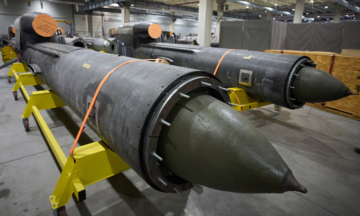Ontario, Canada, has experienced six extreme heat warnings this summer, two more than last year. The Greater Toronto Area (GTA) has endured prolonged periods of heat, with temperatures exceeding 30°C, reaching as high as 35°C in some areas.
Residents in areas with low air conditioning penetration are struggling. Studies indicate that these heat waves are more likely due to climate change in this temperate and subarctic nation.
Students in schools without air conditioning in the GTA have had to endure sweltering classrooms with high humidity. School boards across the GTA have implemented temporary measures like fans, open windows, and turning off lights and computers.
"It's very hot, really too hot. It's not comfortable at all, we have to keep the windows open," a student said.
 |
People cool their dogs at Sankofa Square, Toronto, on 22/6. Photo: Reuters |
People cool their dogs at Sankofa Square, Toronto, on 22/6. Photo: Reuters
The Heat Collaborative, a network of civil society groups in Ontario focused on addressing extreme heat, warned on 18/8 that the heat is endangering students, workers, tenants, and the province's most vulnerable residents.
The organization called on the provincial government to better prepare for heat waves. They recommended tracking heat-related deaths and hospitalizations, ensuring schools have air conditioning, and developing a public awareness program about extreme heat.
"Cooling and fresh air are not luxuries, they are basic necessities for safety and learning. Climate change is not coming, it's here. Every hot day we delay, children suffer," said Farheen Mahmood, a parent of two children who attend schools without air conditioning in east Toronto.
Only 30% of the 579 schools managed by the Toronto District School Board have central air conditioning. The board stated it cannot install more units due to a lack of funding.
 |
People jog in the heat in Toronto, Ontario, Canada, on 7/7. Photo: AFP |
People jog in the heat in Toronto, Ontario, Canada, on 7/7. Photo: AFP
More homeowners are opting for heat pumps for winter heating and summer cooling, including Ashok Lumb and his wife, residents of Mississauga, a city bordering Toronto. Heat pumps operate similarly to two-way air conditioners but are optimized for heating.
Two weeks ago, when the GTA experienced temperatures of 35-36°C, the Lumbs' heat pump malfunctioned, failing to lower the indoor temperature below 29°C. They were forced to use multiple fans.
"The temperature inside was around 29-31°C. We ran six or seven fans to sleep at night and still struggled. It was a nightmare," Lumb complained.
Tenant protections are also being considered. Toronto is reviewing a proposal requiring landlords to maintain temperatures in rental units below 26°C.
 |
Ashok Lumb and his wife, residents of Mississauga, a city bordering Toronto. Photo: CTV News |
Ashok Lumb and his wife, residents of Mississauga, a city bordering Toronto. Photo: CTV News
The Ontario government announced a 10-year, $30 billion investment in school infrastructure. Schools are required to have heat response protocols.
"The government will continue to take action to protect workers, students, and families, especially during extreme heat events," a statement said.
Cooler breezes have temporarily lowered temperatures in Toronto, but meteorologists predict the humid heat will return by the weekend as winds shift to the south and southeast.
Toronto officials warn that the number of days exceeding 30°C could triple by mid-century, from about 20 days to 66 days.
Duc Trung (CTV News, CBC, Toronto City News)












